The spider genus Castianeira (in the family Corinnidae) is one of my favourites. These small spiders are rather elusive, but so beautiful! There are currently 128 known species in the genus, so I will only be able to highlight a small number in this post. This should nonetheless provide a glimpse into the diversity of gorgeous forms they take!
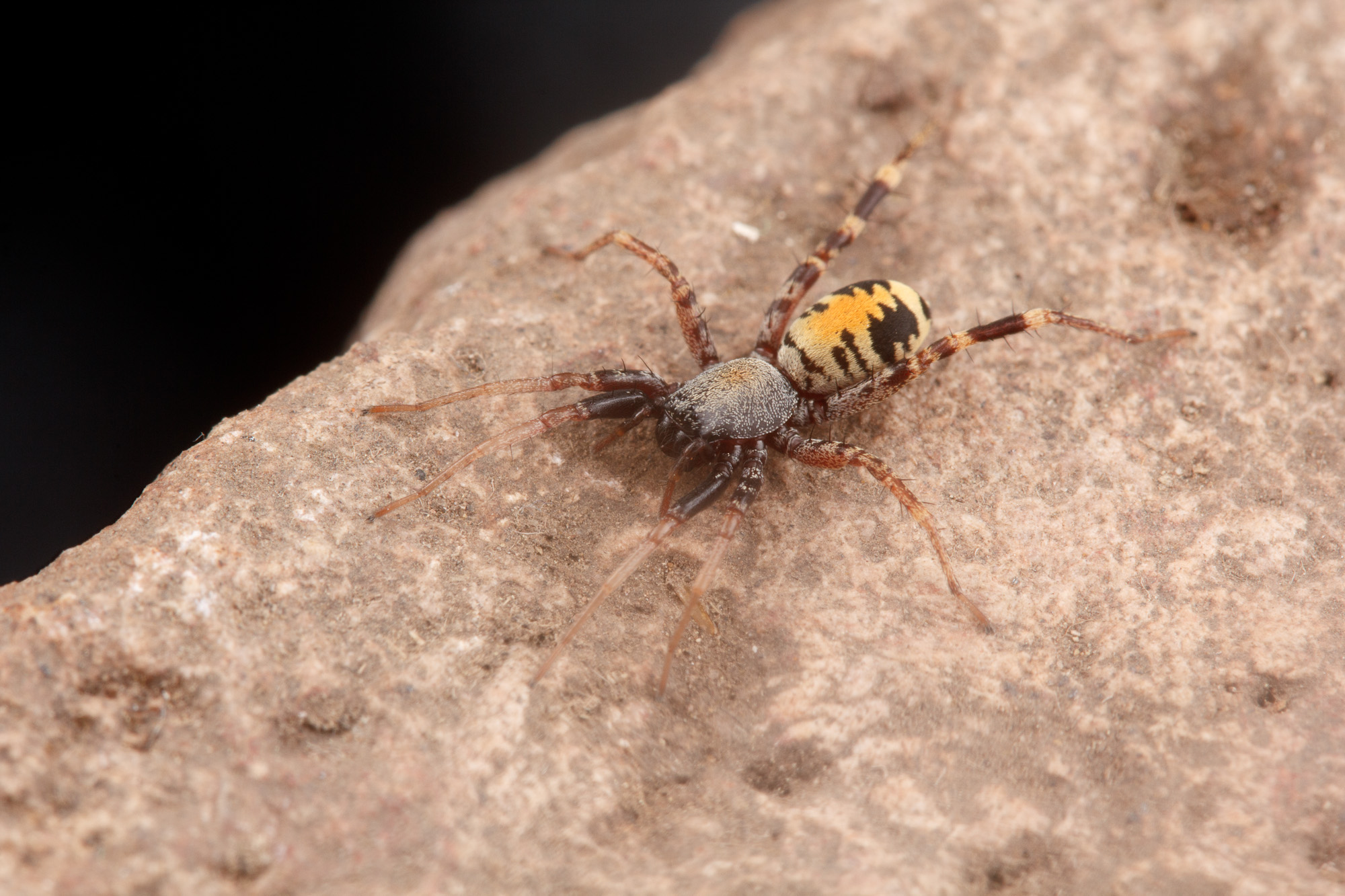
Castianeira dorsata from Arizona. Photo: Sean McCann
Natural History
Common names for the family Corinnidae include “ground sac spiders” (they used to be included in the sac spider family Clubionidae) and “antmimic spiders”. They are not all antmimics, but many species in the genus Castianeira are rather ant-like and are considered generalized ant-mimics.
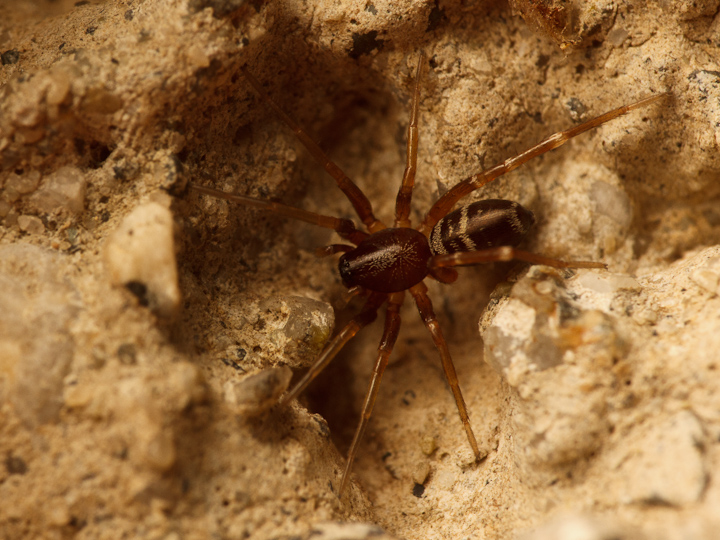
Castianeira longipalpa, found under a rock near a lot of ants at Iona beach in Richmond, British Columbia. This species is thought to be a generalized mimic of myrmecine or ponerine ants. Photo: Sean McCann
The species shown above and below don’t look especially like any particular species of ant, and their mimicry is “imperfect” – besides having fairly elongate bodies and stripes that might give the illusion of a third body segment, they look a lot more like spiders than ants. At first glance, however, they can easily be mistaken for ants (at least by humans). They are fairly ant-like in size and colour (often red or brown and/or black) and they move around a lot like ants, waving their front legs like antennae, and bobbing their abdomens in ant-like fashion. These spiders are often found in close proximity to ants, which provides some support for the idea that they are in fact mimics. They might benefit by looking ant-like to predators who find ants distasteful (and don’t look too closely).
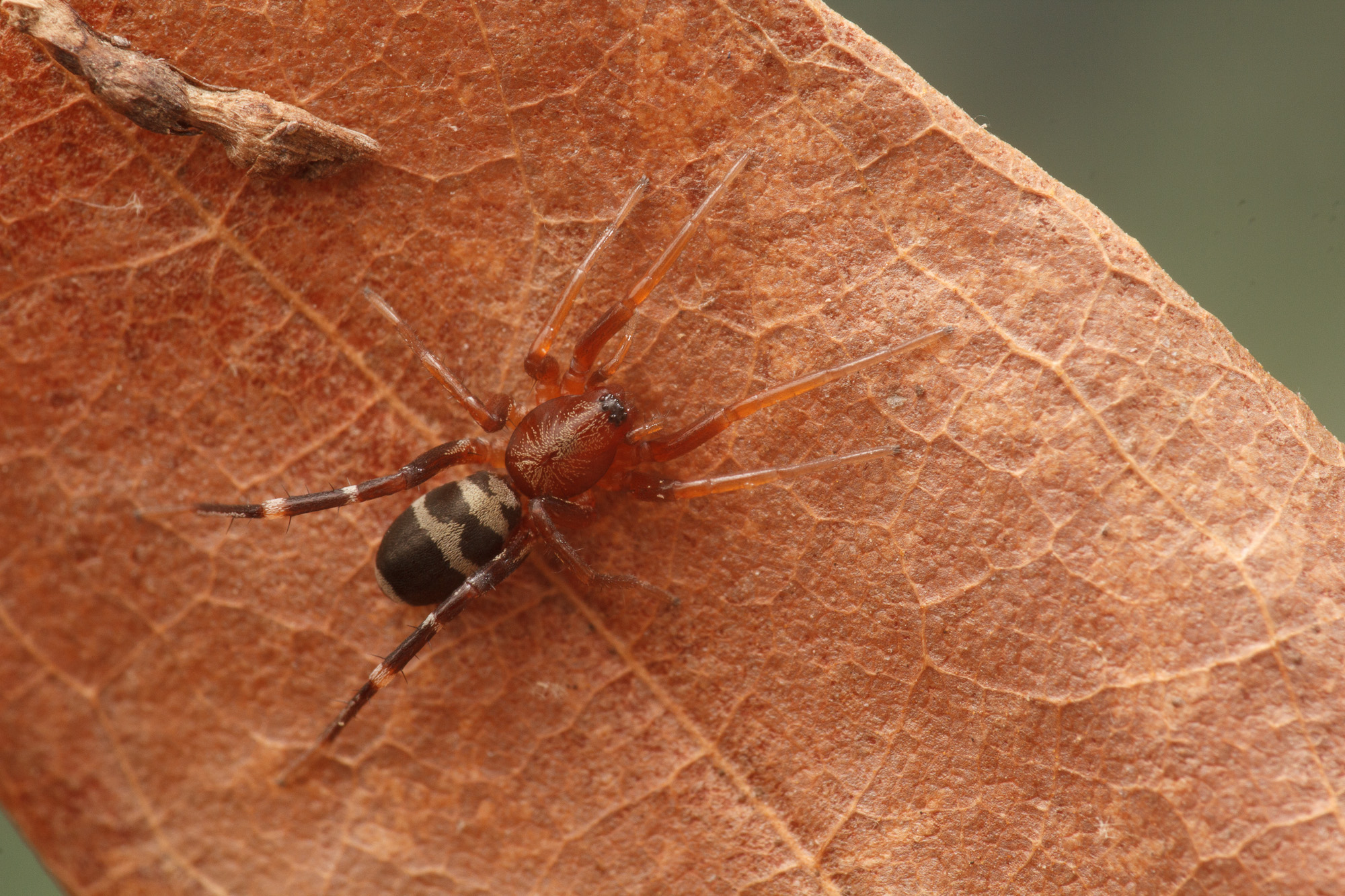
Castianeira sp. from near the Soutwestern Research Station in Arizona. Photo: Sean McCann
Some species, like the one from Singapore below, are a little more ant-shaped, but their morphology is not as extremely modified as some other kinds of ant-mimicking spiders (like this one photographed by Alex Wild).
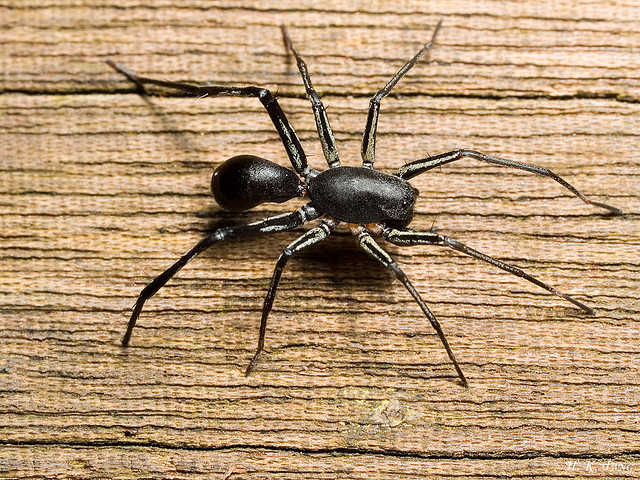
Castianeira sp. from Singapore. Photo: H. K. Tang, licensed under CC BY-NC-ND 2.0.
Some Castianeira species are thought to mimic velvet ants (Mutillidae), rather than ants. Mutillids are not actually ants but wasps, and the females are wingless and brightly coloured, with extremely painful stings. In this case, harmless Castianeira spiders might benefit by looking like the much more dangerous velvet ants, and thus be avoided by predators (this is called Batesian mimicry).
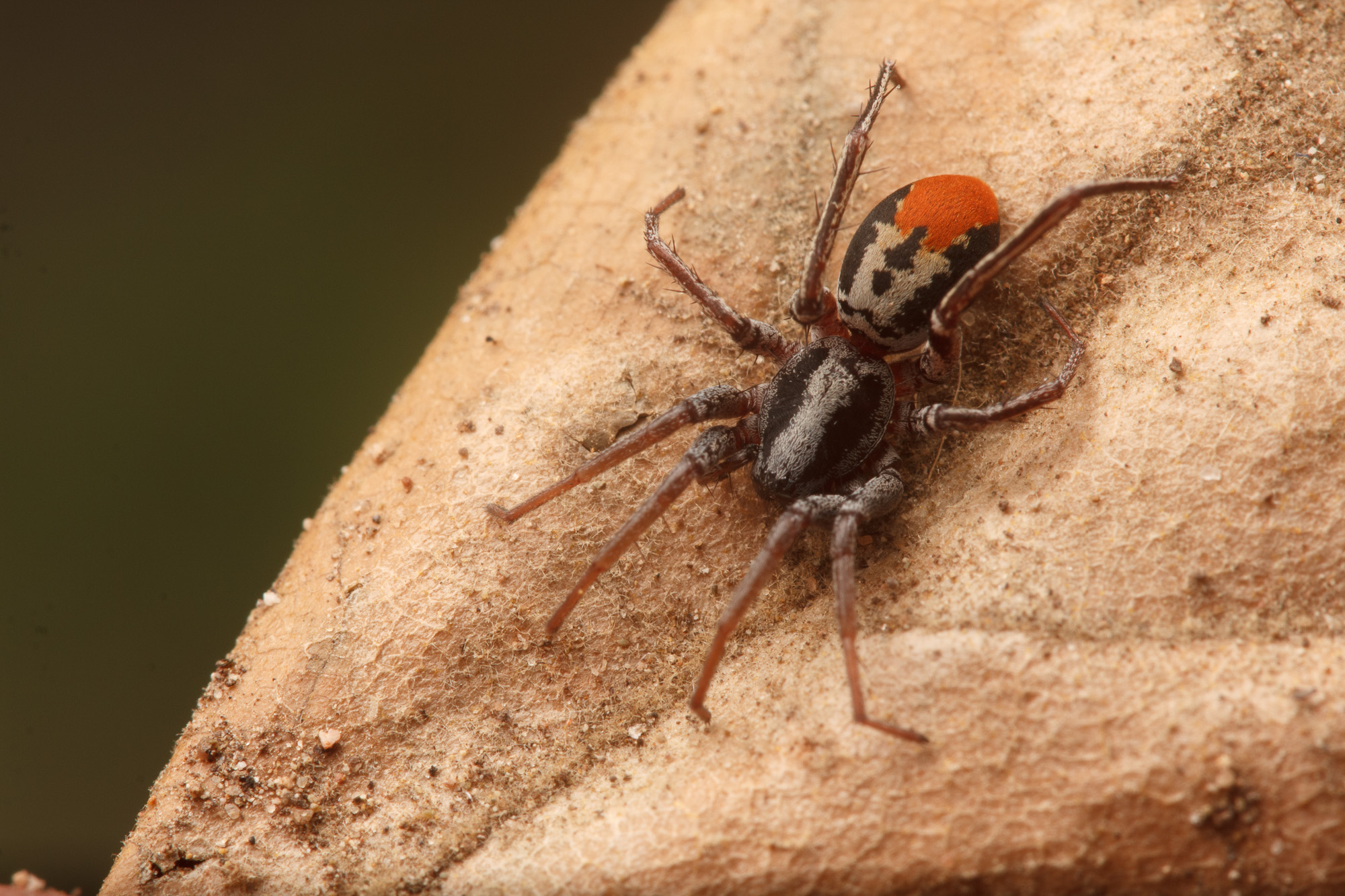
Castianeira occidens from South Fork, Arizona. This spider was found running (fast!) across a forest path during the day. Photo: Sean McCann
As with the ant-like species, these spiders tend not to look very much like any particular species of velvet ant. They are generally mutillid-like in their movements and in that they have bright markings on their abdomens reminiscent of the warning colouration (aposematism) of velvet ants, like the one below.

Velvet ant from French Guiana. Photo: Sean McCann.
One of the most gorgeous spiders I have ever seen is the Castianeira dorsata (below, and at the top of this post) that Sean found wandering around by a stream one evening while we were staying at the Southwestern Research Station in Arizona. These spiders are supposed to be active during the day, so it was interesting to find this one running around in the dark while we were out with our headlamps searching for wolf spiders. Obviously, looking like a velvet ant isn’t going to fool anyone if it’s so dark they can’t see how brightly coloured you are.
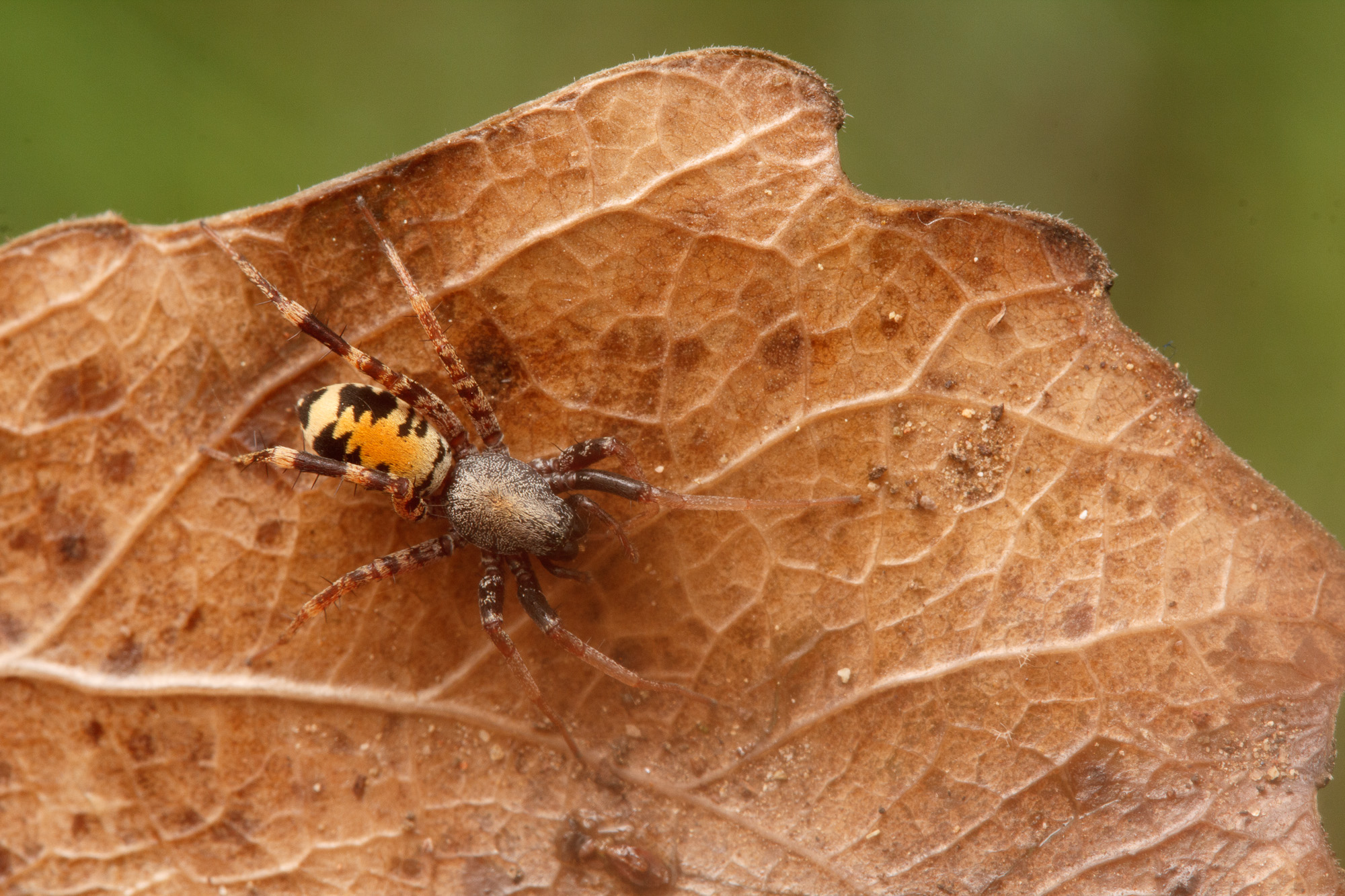
Castianeira dorsata from Arizona. Photo: Sean McCann
I don’t know of any velvet ants that look much like this (although many are bright orange), but I just can’t get over how beautiful this spider is with its sunset-like stripes on the abdomen and a bluish iridescence on the carapace. Even more dramatic is what I like to call the “tiger-striped” Castianeira below. The photo below shows the relative size of Castianeira amoena on a human hand. I imagine they would be as fearsome or even more so than a tiger if they were blown up to a comparable size. In reality however, these spiders are extremely shy, and very fast runners when they are disturbed (as by humans!) – so all the photographs in this post are real treasures.
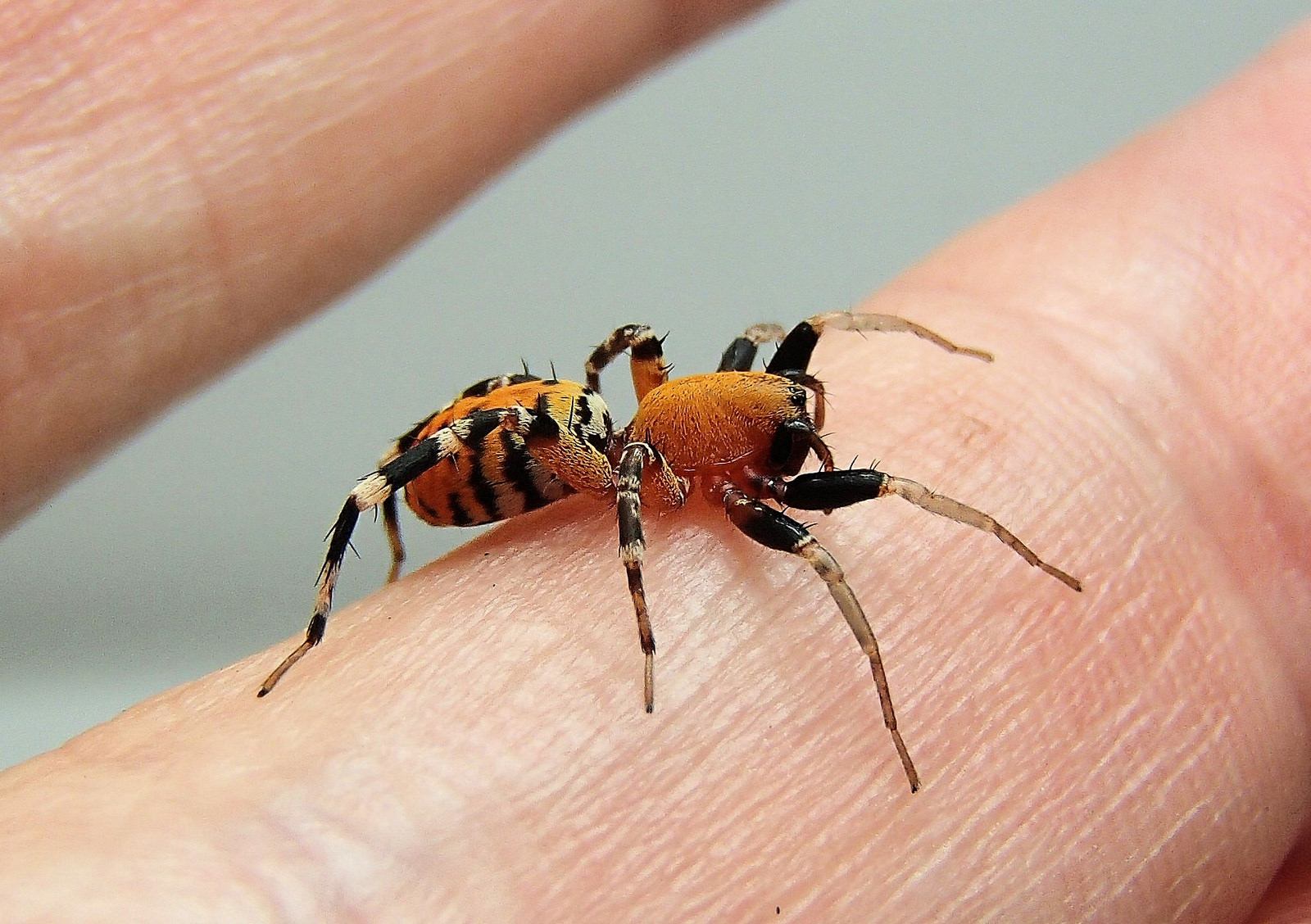
Castianeira amoena. Photo: promiseminime, licensed under CC BY-NC-ND 2.0.
Finally, the spider below is not a Castianeira, but a species in the related genus Graptartia (also in the subfamily Castianeirinae). I couldn’t resist adding it because it shows such a beautiful example of mimicry, and one that’s much more specific than the examples above. The velvet ant model and spider mimic where found within a few metres of another (one of the criteria for Batesian mimicry is that the model and mimic have to be found in the same place!) and the photographer then managed to move them so that he could capture them together in the photo below. Wow!
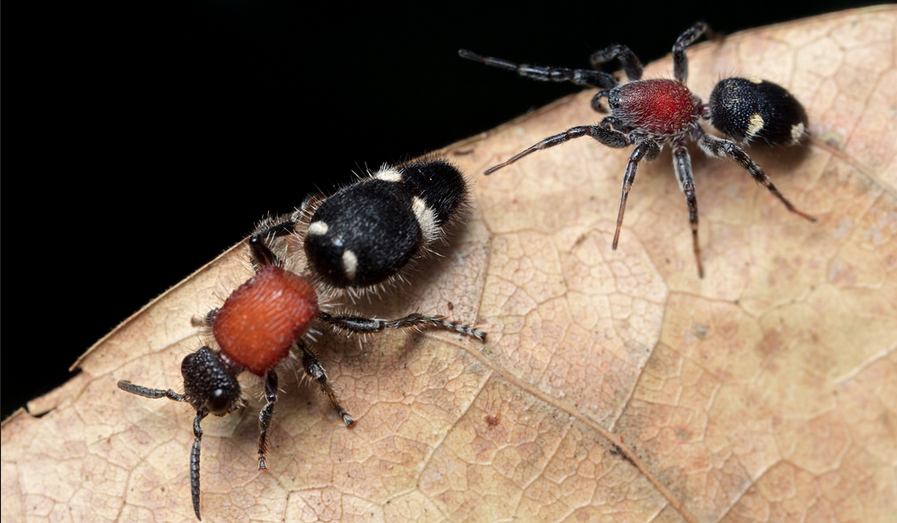
Graptartia granulosa mimic and velvet ant model from Tanzania. Photo: Paul Bertner (used with permission).
Notes on Identification
Usually these spiders are pretty recognizable because of their distinctive colouration, but some of the less bold ones can be confused with other ant-like spiders (like Micaria). Spiders in the genus Castianeira have 8 eyes in 2 rows. The posterior eye row (the upper row, in the photo below) is slightly wider than the anterior (lower) row with all four eyes about the same size. Both rows are slightly procurved (curved toward the front end of the spider). The anterior median eyes (front and centre) can be slightly smaller to much larger than the other two in their row.
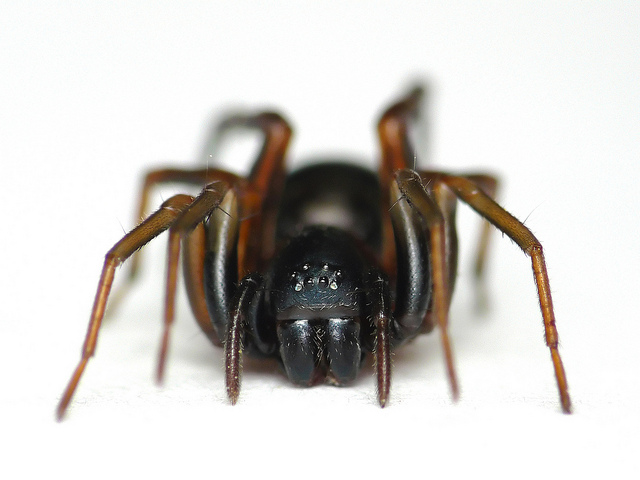
Castianeira cingulata portrait, showing the eye arrangement. Photo: sankax, licensed under CC BY-NC 2.0.
The last (hindmost) pair of legs is always longest, followed by the first (frontmost) pair, and the abdomen is often decorated with bands of white scale-like setae (hairs).

Dorsal veiw of Castianeira longipalpa from BC. Photo: Sean McCann.
References:
Dondale, C. D., & Redner, J. H. (1982). The insects and arachnids of Canada. Part 9. The sac spiders of Canada and Alaska. Araneae: Clubionidae and Anyphaenidae (No. 1724).
Reiskind, J. 1969. The spider subfamily Castianeirinae of North and Central America (Araneae, Clubionidae). Bull. Mus. Comp. Zool. 138(5): 163-325.
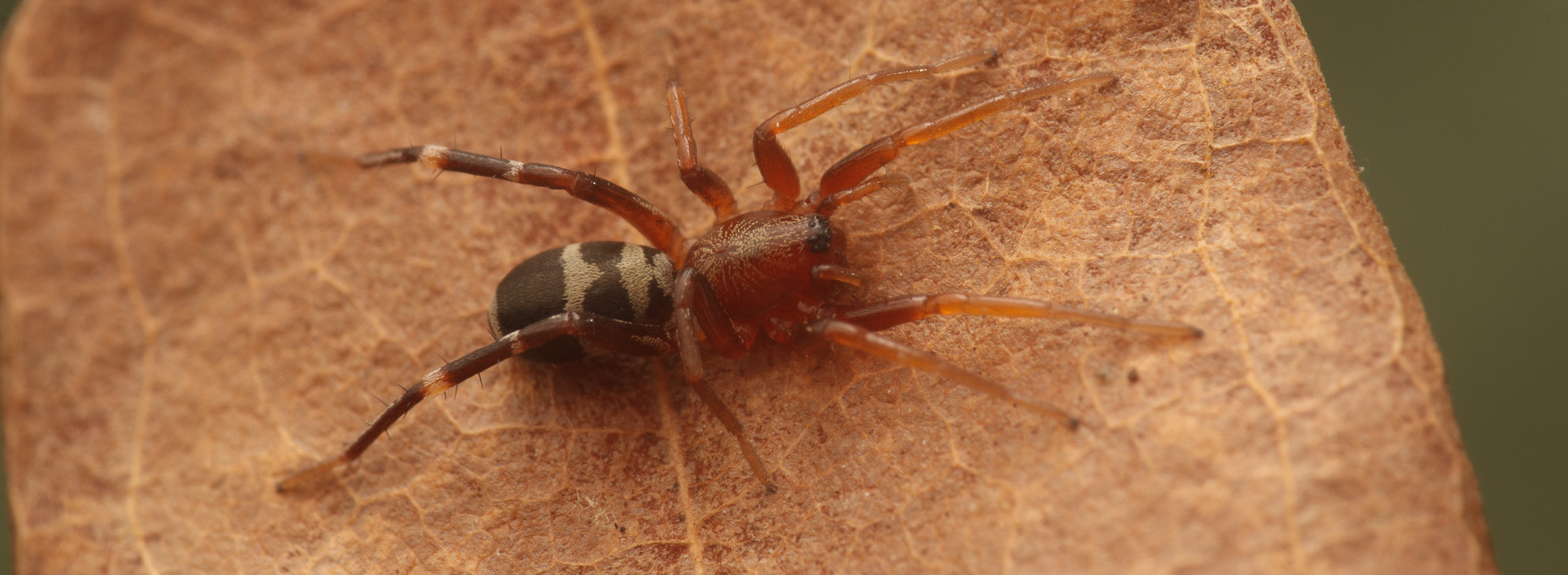
Pingback: Spiderday (#14) | Arthropod Ecology
Pingback: Morsels For The Mind – 11/09/2015 › Six Incredible Things Before Breakfast
I just took a photo of a Mexican Castianeira that you might find interesting. https://www.flickr.com/photos/dinrao/21405170553/
What a beautiful spider! Thanks so much for sharing ::::)
I was bitten on the forehead by one of these. The bite started stinging immediately and within 30 minutes, my skin all over my head was tingling and the bite stings more. Hoping it doesn’t get any worse!
Sorry to hear that! How did it happen???
Thank you for this article. I found one if these spiders floating in my son’s bath and was trying to identify it to make sure it is not venomous. This website is the only place I could find any information (other than the name) about this spider. Are they considered rare? We are located in the panhandle of Florida, and I have no idea how the spider made it into the bathtub.
You’re welcome! No, they are not particularly rare, but it is a bit unusual to find one inside!
Is this type of spider dangerous at all by any chance. I saw a reply and wanted to get in touch quickly. One of these spiders fell from a fan in my ceiling. It seemed to be missing a hind leg or something.
No, not dangerous at all!
Hi. I found what I think is one of the black ones highlighted in this page. Is there an email I can send a photo to? Mine has tiny greenish barbs sticking up off the abdomen.
Sure thing! Catherine.elizabeth.scott [at] gmail.com